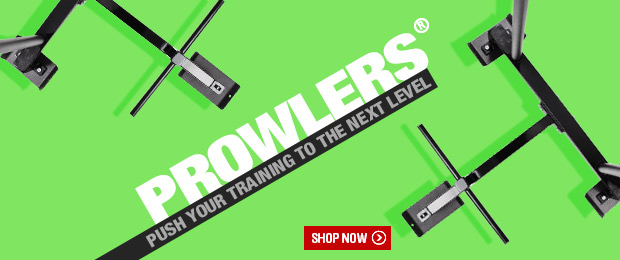
There are many aspects to consider when designing a physical preparation program for team sports. Rugby has unique constraints to work with since the set pieces, scrum, and lineout take up a large proportion of training time — especially the scrum since I have been told by a number of coaches that the physical demands of say, nine scrums in a session, are equivalent to 3 x 3 above 90 percent squat session in the weight room. This aspect certainly needs to be taken into consideration when planning to ensure they do not negatively impact each other.
Many running sports are tangential in nature, so in order to optimize transfer from the weight room to the field, both vertical and horizontal movements need to be considered. To this end, the program I am going to outline will look at elements of training to ensure all bases are covered.
RECENT: The Education Disconnect
Firstly, what are the key components to consider when designing this weight room program for the lower body? The key elements, I believe, are power and force development in two planes as well as both bilateral and unilateral movements, and lastly, but by no means less importantly, the engine room of explosiveness the posterior chain.
Strength development is a major injury prevention strategy of course, but specific muscles are additionally targeted by a range of movements that are part of the CARE program and are done at the conclusion of each session.
This is primarily an off-/pre-season training plan, so lower body will be targeted twice a week in conjunction with sessions designed by the forwards’ unit coach to improve scrum and lineout. I particularly like to use the power movements initially to act as a neural primer for the session, then, if possible, go immediately into the skill session, and then finish with the remaining elements of the lower body program. If this is impractical, then go from the weight room to the field.
So, the elements to consider are as follows:
- Power/Speed (speed-strength/strength-speed): vertical and horizontal
- Horizontal Force: primary (bilateral), secondary (unilateral option)
- Vertical Force: primary (bilateral), secondary (unilateral option)
- Posterior Chain: primary (bilateral), secondary (unilateral)
I would advise taking inventory of the available exercises/equipment that you have in your weight room in the above categories before you begin the program writing. After you have detailed this, you can then chart them and have the players select those movements that they feel they get the most out of, or you can prescribe as I have in the outline below.
Core Accessory Rehab Exercise Program (CARE)
Choose five options from below. 2 x 10 reps on each.
Core
- Half Turkish Get-Ups
- Windmills
- Rollouts
- Suitcase Deadlifts
- Combat Twists
- Weighted Sit-Ups
- Leaning Pallov Presses to overhead position on the TRX
- Flywheel Rugby Rippers
- Trunk rotation
Hips, Hamstrings, Calves, and Knees
- Copenhagen Planks
- Crab Walks with Band
- Lateral Lunges
- Nordics
- Swiss Ball Leg Curls
- Banded Leg Curls
- Hip Thrusts
- Calf Raises
- Petersen Step-Ups
As far as sets and reps go for this program, I would work within the Prilepin’s Chart and use three-week blocks with a straight linear progression, as detailed below:
- Week 1: 4 x 6 @ 70-80%
- Week 2: 4 x 4 @ 80-90%
- Week 3: 4 x 2 @ 90+%
In regard to the flywheel, I have used time as well as reps as a guide in prescribing programs, four sets of 15 to 20 seconds works extremely well. Also, it is worth considering using slightly higher reps for unilateral movements, I have rarely programmed below four reps on these. I would favour the Dan John rep scheme of 8-6-4 for these movements.
There have been some exciting advances in equipment over the last few years. The Static Dynamic Jones Machine by Louie Simmons will revolutionize training for sport. I am very enthusiastic about combining the iso-dynamic squat with the inertial flywheel to take the physical preparation of rugby players to a new level, especially in terms of transfer from the gym to the field. After all, is that not what all training should be attempting to achieve?
Gym Inventory
RELATED: THIRST: Bringing Quality, Service, and Integrity to Terre Haute
Power: Vertical
- Squat Jump
- Trap Bar Jump Shrugs
- Banded Box Squats
- Box Jumps
- Depth Jumps
- Olympic movements and derivatives
Power: Horizontal
If you have a device to measure bar velocity, such as Gym Aware or Tendo Unit, bar speeds will be between 0.8 to 1.3 metres per second.
Horizontal Force: primary (bilateral), secondary (unilateral option)
- Prowler®
- Scrum Truk
- Horizontal Squats
- Inertial Fly Wheel movements
Vertical Force: primary (bilateral), secondary (unilateral option)
- Squat variations
- Deadlift variations
- Step-ups
- Single-Leg Squat options
Posterior Chain: primary (bilateral), secondary (unilateral)
- Romanian Deadlifts
- Glute Ham Raises
- Back Extensions
- Nordics
- Bosch Hamstring variations
- Natera Hamstring variations
- Hip Thrusts
- Good Mornings
- Reverse Hypers™
- Pullthroughs













Firstly; this is a really interesting article, so thank you very much for putting it together.
I wanted to ask a couple of questions in regard to the flywheel elements you have discussed:
- Firstly, where you say you find timed sets particularly effective, why do you think this is the case?
- Secondly, why do you suggest that higher rep schemes should be prescribed with unilateral exercises?
- Re: the inertial flywheel horizontal squat you mention in session 2, how do you set this up? - And Finally, what is the thought process behind using a flywheel with a Hz squat variation?
I hope you don't mind the multitude of questions, if it is easier please feel free to drop me a line on my email address (tombryansnc@gmail.com).
Many thanks again, I really appreciate you putting out the information that you do and hope to speak with you again further in the near future.
Tom
Many thanks for coming back so quickly. I hope you've had a great start to the new year.
I received the video, thanks for sending that over - it was really interesting to see the flywheel used in this way; I had never considered using one like that before. Thank you also for the insight provided in your answers to my questions.
Do you feel that Hz eccentrics using a flywheel would have any application outside of physical prep for rugby? For example, using a track athlete using a split stance to transfer to pushing off from a block start?
Lastly, I think that the concept of training all types of contraction you have discussed at the end of your paragraph is very interesting. As you say, hopefully there is some research being done in this area somewhere.
Many thanks agin for your response, insight and for making this information so readily available. Again, I really hope we can talk more on this area as things develop as there are no doubt some items I will be experimenting with.
Tom